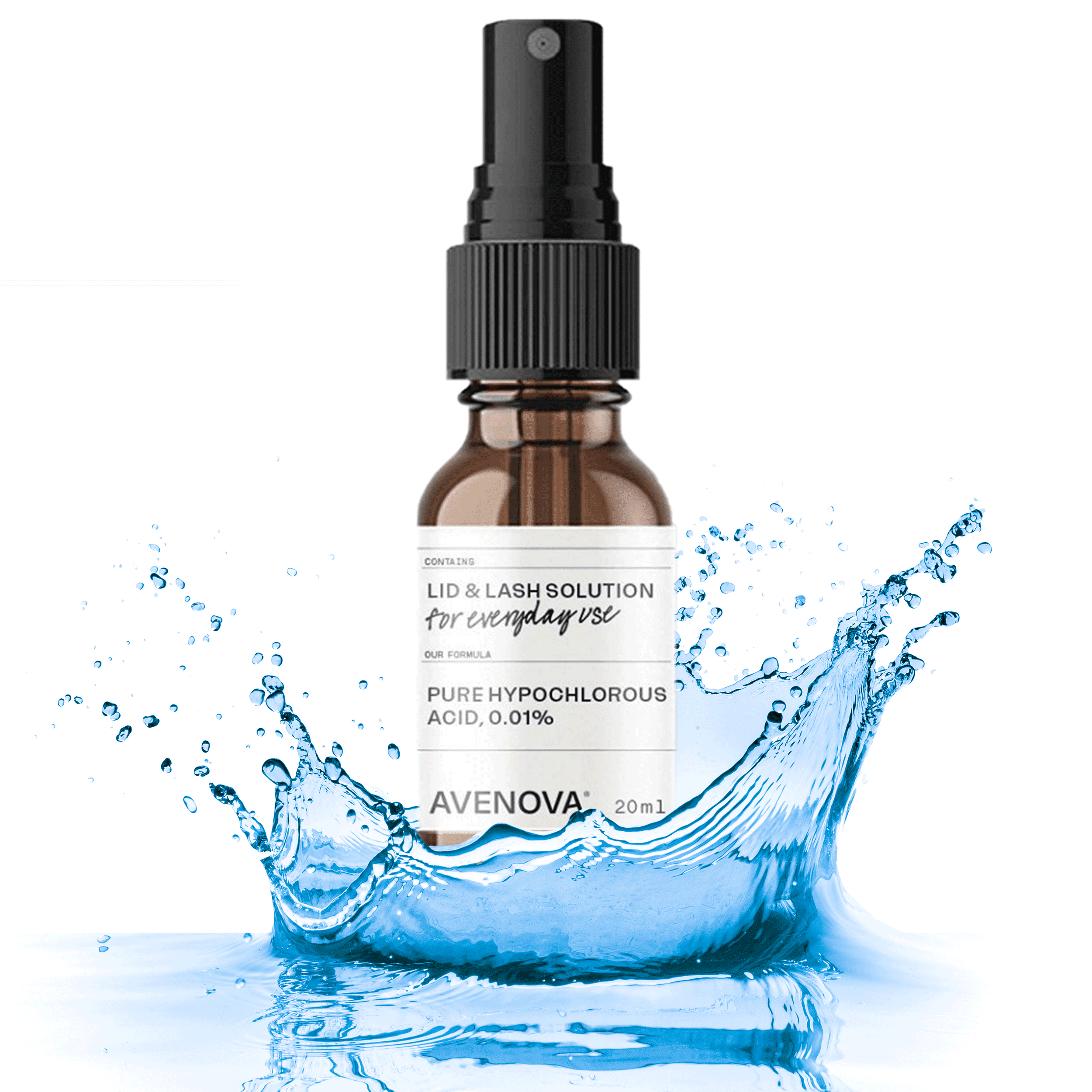


'Diagnosis and treatment of demodectic blepharitis'.

^ a b c d e f g h i j k l Blepharitis: Symptoms, Treatment, and Prevention.^ a b c Blepharitis Definition - Diseases and Conditions - Mayo Clinic.^ a b c d e f g h i j k l Singh Tonk R, Hossain K (November 27, 2014).Vaughan & Asbury's general ophthalmology (18th ed.). In this study, researchers provide a diagnosis of the disease and propose diagnostic criteria of Demodex blepharitis. However, the pathogenesis of demodicosis is still unclear. In another recent study, the presence of Demodex has been unveiled as a common cause of blepharitis. There is growing evidence that, in some cases, it is caused by Demodex mites.
#Hypochlorous acid and blepharitis skin#
Like anterior blepharitis, it is a bilateral chronic condition and may be associated with skin rosacea. Posterior blepharitis is an inflammation of the eyelids, secondary to dysfunction of the meibomian glands. Meibomian Gland Dysfunction is a result of abnormalities of the meibomian glands and altered secretion meibum, which plays an imperative role in lagging the evaporation of tear films and smoothing of the tear film to produce an even optical surface. Seborrheic blepharitis is characterized by less inflammation than Staphylococcal blepharitis however, it causes more excess oil or greasy scaling. The prevalence of Staphylococcus aureus in the conjunctival sac and on the lid margin varies among countries, likely due to differences in climate and environment. It is commonly recurrent and it requires special medical care. Staphylococcal blepharitis may start in childhood and continue into adulthood. In a study of ocular flora, 46% to 51% of those diagnosed with staphylococcal blepharitis had cultures positive for Staphylococcus aureus in comparison to 8% of normal patients. Staphylococcal blepharitis is caused by an infection of the anterior portion of the eyelid by Staphylococcal bacteria. Symptoms and signs of blepharitis are often erroneously ascribed by the patient as 'recurrent conjunctivitis'. Tears may be frothy or bubbly, which can contribute to mild scarring along the eyelids. Blepharitis can also cause blurred vision due to a poor tear film. The lids may become red and may have ulcerate, non-healing areas that may lead to bleeding. Long-term untreated blepharitis can lead to eyelid scarring, excess tearing, difficulty wearing contact lenses, development of a stye (an infection near the base of the eyelashes, resulting in a painful lump on the edge of the eyelid) or a chalazion (a blockage/bacteria infection in a small oil glands at the margin of the eyelid, just behind the eyelashes, leading to a red, swollen eyelid), chronic pink eye (conjunctivitis), keratitis, and corneal ulcer or irritation. This can be resolved with a proper eyeglass prescription. Debris in the tear film, seen under magnification (improved contrast with use of fluorescein drops)Ĭhronic blepharitis may result in damage of varying severity and, in the worst cases, may have a negative effect on vision.
/eye-irritation-GettyImages-588684133-578f8b855f9b584d201d86d3.jpg)


 0 kommentar(er)
0 kommentar(er)
